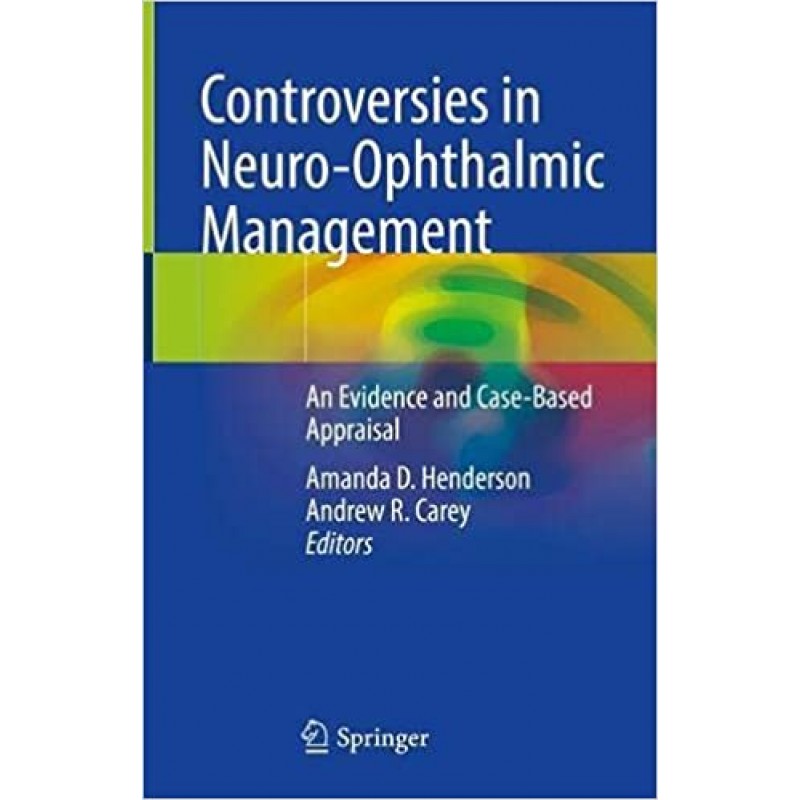
- Συγγραφείς: Amanda D. Henderson , Andrew R. Carey
- ISBN: 9783030741020
- Εκδότης: Springer
- Σελίδες: 288
- Έτος Έκδοσης: 2021
Introduction
This book functions as a resource for providers who treat patients with neuro-ophthalmic conditions. Using an evidence-based approach to controversial management decisions, the material is presented in a digestible, case-based format.
Divided into six sections, the book begins with an introduction to its framework, format, and purpose. Following this, sections two, three, and four discuss various optic neuropathies, ocular motility disorders, and transient visual symptoms. The concluding sections then address neuro-ophthalmic manifestations of pain, including migraine and post-concussive syndrome, and systemic diseases, such as giant cell arteritis. Each chapter focuses on cases that are historically complex, or which have undergone a recent shift in traditional management due to new scientific discoveries or newly available therapies.
Controversies in Neuro-Ophthalmic Management presents essential, thorough information on management options and the data for their use to provide the best care for patients.
-
Front MatterPages i-viii
-
Introduction
-
Front MatterPages 1-1
-
-
Optic Neuropathies
-
Front MatterPages 5-5
-
-
-
Ocular Motility Disorders
-
Front MatterPages 107-107
-
-
Kemar E. Green, Daniel R. GoldPages 157-168
-
Front MatterPages 169-169
-
David Merriott, Steven Carter, Lilangi S. EdiriwickremaPages 171-187
-
-
Pain
-
Front MatterPages 207-207
-
-
Systemic Disease
-
Front MatterPages 243-243
-
-
Back MatterPages 281-288
About the editors
Amanda D. Henderson, MDJohns Hopkins Wilmer Eye InstituteDr. Henderson is an Assistant Professor of Ophthalmology and Neurology in the division of Neuro-Ophthalmology at the Wilmer Eye Institute at Johns Hopkins. She attended medical school at Emory University, completed an ophthalmology residency at the Medical College of Georgia, and completed a fellowship in neuro-ophthalmology at the Bascom Palmer Eye Institute.Her research focuses on optic neuropathies, specifically non-arteritic anterior ischemic optic neuropathy. She also has a particular interest in medical education and is the Neuro-Ophthalmology Fellowship Director, Associate Ophthalmology Residency Program Director, and Education Champion for the division of Neuro-Ophthalmology at Wilmer.
Andrew R. Carey, MDJohns Hopkins Wilmer Eye InstituteAndrew R. Carey, MD is an Assistant Professor of Ophthalmology in the division of Neuro-Ophthalmology at the Wilmer Eye Institute. He specializes in neuro-ophthalmic disorders such as optic neuritis, uveitis related papillitis, ischemic & hereditary optic neuropathies as well as diseases of the retina, including age-related macular degeneration, diabetic retinopathy, toxic retinopathies and inherited disorders of the retina such as retinitis pigmentosa.Dr. Carey’s clinical and research interests include comparative effectiveness and cost-benefit of intravitreal medications, long-term outcome of treatments for choroidal neovascularization, novel treatments for papillitis, and the use of novel imaging modalities to better diagnose and understand optic nerve and retinal diseases.Dr. Carey received his bachelor's from Davidson College in mathematics in 2006. In 2010, he received his medical degree from the University of South Florida. He completed his ophthalmology residency as Chief Resident in 2014 at the University of South Florida. He then went on to complete his fellowship in neuro-ophthalmology at Bascom Palmer Eye Institute in 2015 and his fellowship in medical retina at the University of Iowa in 2016.
Transient Visual Symptoms
-


